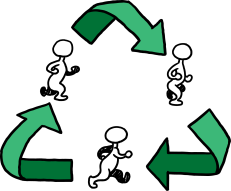- Modules
- Walk-Cycle Animation with Harmony Essentials
- Walk Analysis
Walk Analysis
T-EXC-001-001
The walk cycle is one of the most common animations you'll do when creating films. By regularly observing and analyzing different types of walks when you are outdoors, you'll have a wealth of information for future reference.
In this topic, you will discover a new awareness of walking and breaking down the walk of a character. After all, a character's walk can be its defining characteristic that instantly sets it apart from other characters.

When animating anything, it is especially important to analyze the action before starting to draw. One way to do this is to act out different walks and study the details, such as arm, hand, and head movement.
- The walk-cycle is not just about the legs. The position of the rest of the body says a lot about the character too.
- Is the character bouncing, strutting, shuffling, or sneaking?
- What kind of mood is the character in? Hurried? Lazy? Happy-go-lucky? Furtive?
- Cycles are animation shortcuts that reduce the amount of required work.
- A walk cycle usually consists of two steps that the animator reuses to create an extended walk.
- During a walk cycle, the background is moved while the character essentially walks in place.

- At the contact positions, both feet are touching the ground -- the heel of one foot and the toe of the other. The right foot is in front. The heel and the toe are both touching the ground.

- At the opposite contact position (after one full stride), the legs swap positions. The feet of the first and second contact position should be the same distance apart. The left foot is in front. The heel and the toe are both touching the ground.
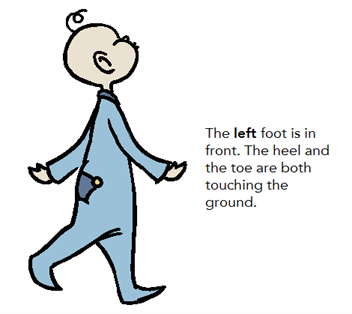
The feet of the first and second contact position should be the same distance apart.
- At the passing position, the two legs meet as they swap positions. The leg moving to the front is bent. The left leg is bent as it passes the right foot.
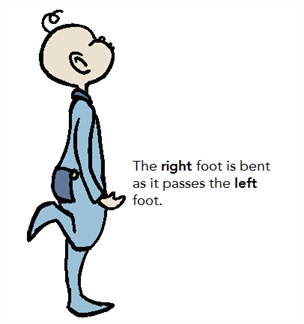
- Between the first contact position and the passing position, is the down position. In this position, the character is in the lowest position of the cycle, dropping down slightly from the previous and next drawings. In this position, the character's hands are at their greatest distance apart. Both legs are bent, which makes the character appear slightly shorter.
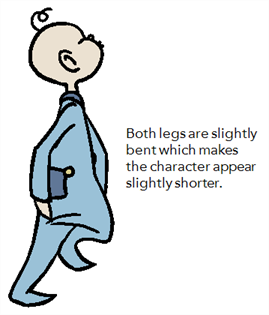
- Between the passing position and the second contact position is the up position. The character appears extended here. The back leg is pushing up, so the character appears extended.
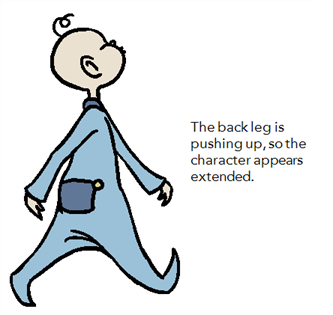
Time Estimated 10 mins
Difficulty Level Beginner
